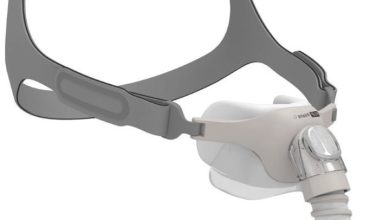The Tiny Powerhouses Behind Modern Medicine

How Fiber Capsules Are Made and Why It’s Trickier Than You Think
Picture a factory where machines spin out thousands of tiny, edible shells every minute—each one destined to carry medicine, vitamins, or probiotics straight into your body. Sounds simple? Hardly. Fiber capsule manufacturing is a high-wire act where chemistry, engineering, and a bit of old-fashioned elbow grease collide.
The Raw Stuff: What Goes Into a Fiber Capsule?
First, the shell. Forget gelatin—these capsules are built from plant-based polymers like hypromellose or pullulan. They’re like edible origami, folding into perfect little containers that dissolve right on schedule in your gut. Then there’s the fill. Powders, liquids, even tiny beads of medicine—anything that needs protection until it hits your stomach. But here’s the catch: moisture is the enemy. Some ingredients turn into a sticky mess if exposed to humidity, so factories keep conditions drier than a desert breeze.
Machines That Work Faster Than a Caffeinated Squirrel
The real magic happens in the encapsulation machines. Rotary die systems stamp out capsule halves at speeds that’d make your head spin—hundreds per minute, each one identical down to the milligram. But speed isn’t everything. Temperature has to be just right. Too hot, and the film cracks. Too cold, and it won’t seal. Operators tweak settings like chefs adjusting a recipe, because even a tiny slip means capsules that split too soon or refuse to dissolve.
The Human Factor in a High-Tech Game
Sure, machines do the heavy lifting, but people keep the whole show running. Formulation scientists tweak recipes like mad chemists—too much filler and the capsule won’t dissolve right; too little and the medicine might irritate the stomach. Then there’s troubleshooting. When a machine starts spitting out wonky capsules, engineers don’t just hit “reset.” They hunt for gremlins in the system—air pressure, film tension, even static electricity. One engineer joked, “It’s like fixing a car while it’s still racing.”
Eco-Friendly or Bust: The Push for Greener Capsules
Gelatin capsules? Old news. Fiber capsules are stepping up as the eco-friendly alternative—no animal products, fully biodegradable, and some even use agricultural waste like rice bran. But sustainability isn’t always smooth sailing. Sourcing plant-based materials that meet strict purity standards (without costing a fortune) is like trying to find a parking spot at a Black Friday sale—possible, but stressful.
Regulations: The Paperwork Nightmare
Getting a fiber capsule approved isn’t just science—it’s a legal obstacle course. The FDA wants years of stability data. Europe demands exhaustive safety reports. And some countries change rules faster than a toddler changes moods. Compliance teams live by one rule: “If it wasn’t documented, it didn’t happen.” Auditors can drop in unannounced, digging through records like detectives at a crime scene. Miss one signature? That’s a fine waiting to happen.
Fiber capsules might look simple, but behind each one is a symphony of precision, innovation, and a little bit of stubbornness. From battling moisture to jumping through regulatory hoops, making them is anything but easy. But when they work? They’re small marvels of modern medicine—proof that sometimes, the tiniest things pack the biggest punch.
From Factory Floor to Pharmacy Shelf: What Happens Next
Once fiber capsules are sealed, inspected, and approved, their journey is far from over. These tiny powerhouses still need to be packaged, stored, and shipped under tightly controlled conditions. Remember that whole “moisture is the enemy” problem? It doesn’t go away. Capsules are sealed into blister packs or bottles with desiccants, then boxed in climate-controlled crates. One slip—a warehouse that’s too humid or a truck that’s too hot—and the whole batch might degrade before it ever reaches a patient.
Shelf Life and the Science of Staying Potent
To make sure capsules hold up for months—or even years—manufacturers run stability tests that mimic every extreme. Think: freezing temperatures, tropical heat, and weeks of shaking. Scientists check if the capsule cracks, discolors, or lets moisture in. The active ingredient inside is tested repeatedly to ensure it still does its job. These data points aren’t just academic—they’re required by regulators, and they influence everything from expiration dates to storage instructions on the bottle.
What the Future Holds: Smarter, Smaller, and Personalized
The next frontier? Capsules that don’t just dissolve—they think. Researchers are exploring smart capsules that release medicine only when they reach a specific part of the digestive tract. Others aim to carry sensors to monitor how the body reacts. And with the rise of personalized medicine, future fiber capsules might be custom-made for each patient’s biology—printed on demand using 3D printers right in the pharmacy.
In the end, these little cellulose shells are far more than packaging—they’re a fusion of biology, technology, and manufacturing wizardry. So the next time you pop a fiber capsule, remember: you’re not just swallowing a supplement. You’re taking a bite of cutting-edge science.



